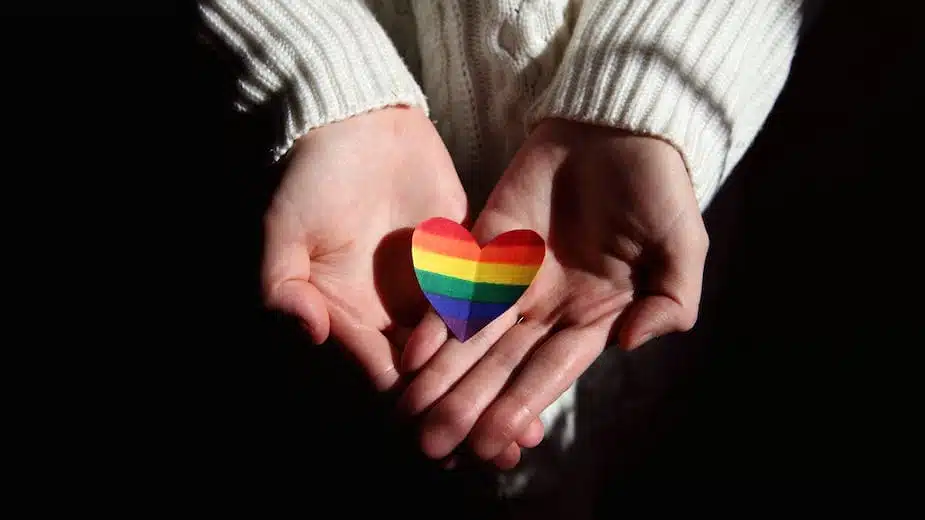The letters LGBTQIA+ encompass a diverse community of lesbian, gay, bisexual, transgender, queer/questioning, intersex, and asexual individuals. The “+” represents identities outside that acronym, like non-binary. Understanding this terminology and using inclusive language is key for meaningful LGBTQIA+ conversations and advocacy.
This discourse shapes attitudes and has the power to validate or invalidate people’s identities. As such, it is crucial we challenge assumptions and misconceptions that contribute to exclusion and discrimination. By exploring LGBTQIA+ language complexities, debunking myths, questioning heteronormativity, and addressing microaggressions, we can cultivate empathy and work towards a more equitable society.
The Building Blocks: LGBTQIA+ Terminology
LGBTQIA+ terminology refers to language describing gender identities, sexual orientations, and biological sex characteristics beyond the male-female binary. Each letter in the acronym represents a facet of the community:
- Lesbian – Women attracted romantically/sexually to other women
- Gay – Men attracted to other men
- Bisexual – Attraction to one’s own and other genders
- Transgender – Gender identity differs from sex assigned at birth
- Queer – Umbrella term for non-normative identities
- /Questioning – Exploring one’s sexual/gender identity
- Intersex – Born with variations in sexual anatomy
- Asexual – Lacking sexual attraction
- /Aromantic – Lacking romantic attraction
This glossary provides a framework for understanding LGBTQIA+ experiences. However, it does not fully capture the complexity or fluidity of gender and attraction. Identities can shift over time as people explore what feels most authentic. Having compassion while listening to people’s self-identification is key for an inclusive discourse.
The Nuances of Inclusive Language
Inclusive language demonstrates respect for people of all gender identities and sexual orientations. It challenges assumptions by using words that embrace diversity. For example, using “partner” instead of gendered terms like boyfriend/girlfriend creates space for LGBTQIA+ relationships. Using “gender diverse” rather than labels like trans or intersex unless specifically asked, avoids improper assumptions.
Inclusive language also means allowing people to self-identify with their own words and pronouns. Making assumptions about someone’s pronouns based on appearance contradicts this. It is better to politely ask, “What pronouns do you use?” Then respect the pronouns provided without question.
These subtleties require awareness, but inclusive language ultimately fosters belonging for marginalized groups. The effort to understand diverse perspectives allows us to have thoughtful dialogue instead of harmful speech.
Recognizing and Dismantling Heteronormativity
Heteronormativity refers to societal structures that reinforce heterosexuality and cisgender identity as “normal” while positioning LGBTQIA+ identities as abnormal. This manifests through gender stereotypes, lack of inclusive policies, derogatory language, and absence of positive representation in media.
We must recognize heteronormative biases within ourselves and our institutions in order to dismantle them. For example, confront discomfort you may feel with public displays of queer affection or transgender people using bathrooms aligning with their gender. Unpack why the idea of a same-sex couple raising children may challenge your notions of family. Getting to the root of internalized heteronormativity is needed to overcome it.
Externally, advocating for inclusive sex education, policies protecting LGBTQIA+ people from discrimination, and representation in positions of power can help undo heteronormative standards in society. Language change often follows social change, so cultural shifts are key for long-term impact.
Debunking Harmful Myths and Misconceptions
Myths and misinformation about LGBTQIA+ people have perpetuated intolerance for years. But through proactive education and amplifying authentic voices, we can debunk fallacies that cause real harm.
One myth is that diverse sexual orientations and gender identities somehow go against nature or science. However, research reveals gender and sexuality differences have existed across human history and the animal kingdom. Though the causes involve complex biology and socialization, being LGBTQIA+ is a naturally occurring aspect of identity.
Similarly, dangerous misconceptions have posited that LGBTQIA+ identities are mutable lifestyle choices or conditions to be cured. Sexual orientation conversion practices have been deemed unethical and ineffective by health organizations worldwide. No amount of intervention can alter someone’s innate sense of self, though acceptance creates space for people to live freely.
Stereotyping LGBTQIA+ people as having certain personalities, interests, or appearances is also problematic. Gender and sexual diversity exists across all demographics, defying generalization. Pushing back when we hear or see limiting portrayals helps stamp out misinformation.
The Evolution of LGBTQIA+ Language Over Time
The LGBTQIA+ lexicon continues expanding as awareness of gender and sexual diversity grows. Identities and terminology once unnamed or taboo now enjoy increasing recognition and acceptance.
Same-sex attraction used to be discussed in hushed tones or crude slang. As LGBTQ rights awareness spread, “gay” and “lesbian” entered the common vernacular. Recently, more nuanced terms like “pansexual,” “non-binary,” and neo-pronouns like “ze/zir” have emerged, capturing experiences outside rigid categories.
Despite momentum, language still struggles to keep pace with gender complexity. Misgendering and deadnaming transgender people remains common. And though intersex visibility is rising, lack of linguistic clarity continues othering these individuals. Expanding our vocabulary and properly using new terms promotes further inclusion.
Language as an Advocacy Tool for Awareness & Acceptance
Terminology holds power. What we call groups of people influences societal attitudes about them, for better or worse. Slurs breed contempt while neutral or positive language humanizes. Because discourse helps shape reality, language choice matters for LGBTQIA+ advocacy.
Using accurate, identity-affirming terminology raises awareness and counters bigotry. For example, the word “queer” has shifted from derogatory slur to proudly reclaimed descriptor. Calling out offensive terms when used promotes consciousness around word impact.
Discussing LGBTQIA+ topics respectfully in media, education, politics, and daily talk also advances acceptance. The more good-faith conversations exploring these identities occur, the more we chip away at stigma. Compassionate language paired with representation helps create welcoming environments for all gender and sexual identities.
Examining Everyday LGBTQIA+ Microaggressions
While overt discrimination causes clear harms, microaggressions—indirect, subtle putdowns of marginalized groups—also quietly foster toxicity for LGBTQIA+ people. Because they often happen unconsciously, calling out these instances can feel uncomfortable. Yet doing so is imperative for progress.
One common microaggression is assuming universal cisgender heterosexuality unless otherwise disclosed. By taking identities expressed openly at face value yet doubting those outside the norm, this centers dominant groups at minority ones’ expense. Another example involves backhanded praise like calling a lesbian couple “so normal!” or being amused by a transgender person using a public restroom aligning with their gender identity. Though not necessarily ill-intentioned, remarks like these subtly delegitimize LGBTQIA+ people.
Gently bringing attention to these microaggressions prevents passive acceptance of belittling norms. As awareness spreads, cultural standards can shift. But it starts with individuals encouraging more thoughtful, inclusive interactions through speech and behavior interventions.
The Complexities of Gender & Pronoun Usage
Longstanding social conventions dictate that gender operates within a male-female binary, with sex assignment at birth determining pronouns used. However, gender diversity exists on a broad, fluid spectrum. More people now embrace terms like “non-binary,” “genderqueer,” “genderfluid”, and others affirming their experiences falling outside or across the gender binary.
Accordingly, more neutral pronouns have come into play. Convertional “he” and “she” pronouns presume identities fitting neatly into one of two boxes—a presumption that can distress individuals whose inner selves differ from appearances or societal expectations. Hence, gender-neutral pronouns like “they/them” and neo-pronouns like “ze/zir” enable self-expression without confinement.
Because pronouns hold significance for how we view ourselves in relation to social gender conventions, their usage matters. Misgendering someone by deliberately refusing to use their pronouns communicates hostility towards their identity. Getting pronouns right fosters dignity and validation LGBTQIA+ individuals too often lack.
Navigating the Intersections of LGBTQIA+ Identities & Experiences
LGBTQIA+ discourse encompasses multidimensional language issues because gender and sexual identity intersections vary widely across groups. Black LGBTQIA+ individuals may use certain slang terms positively that non-Black speakers should avoid. Transgender people of color disproportionately suffer violence and discrimination, a truth vocabulary about trans legitimacy must reflect. Religious LGBTQIA+ individuals navigate traditions imposing hostile dogma about their identities—traditions shaping family dynamics and speech behind closed doors.
Ultimately, no uniform LGBTQIA+ experience exists. Vocabulary insufficiently capturing intra-community diversity promotes erasure and marginalization of intersectional identities. Centering writings and voices across the LGBTQIA+ spectrum pushes language to better represent all facets of this diverse community. Doing so engenders deeper understanding and solidarity across both inter- and intra-group differences.
Ongoing Exploration with Patience & Compassion
Conversing respectfully about complex societal issues requires grace. We must approach dialogue anticipating misunderstandings will occur. Demonstrate willingness to learn from mistakes, take accountability, and move forward with compassion. Progress happens gradually through openness, honesty and good faith on all sides.
The language surrounding gender and sexual diversity will keep evolving over time. Identities and terminologies not viable today may enjoy widespread legitimacy in coming decades. Maintaining humility and curiosity is key for engaging in this emerging linguistic landscape.
By continuously expanding our knowledge of this diverse community’s perspectives and needs, we can nurture more inclusive and affirming societal standards. With concerted effort and compassion, language can help create a culture embracing humanity in all its remarkable diversity.



